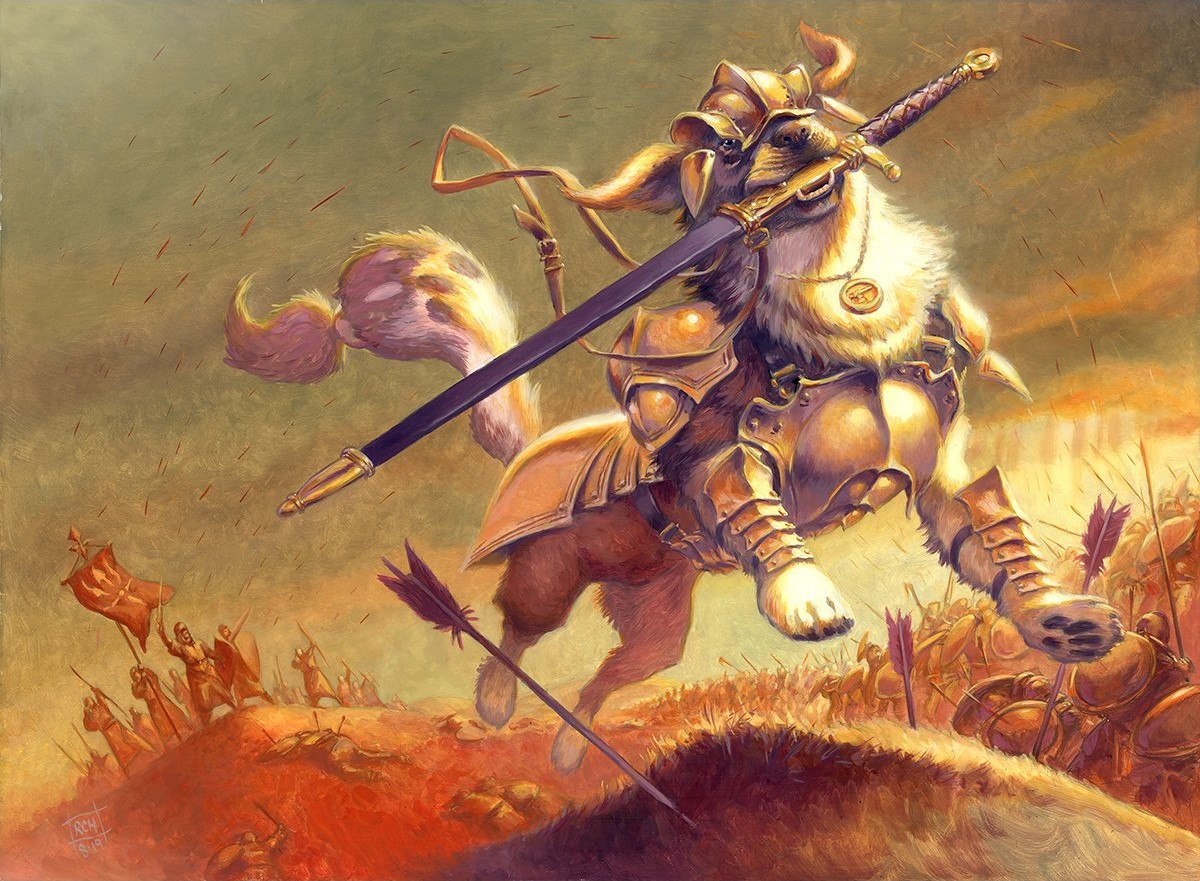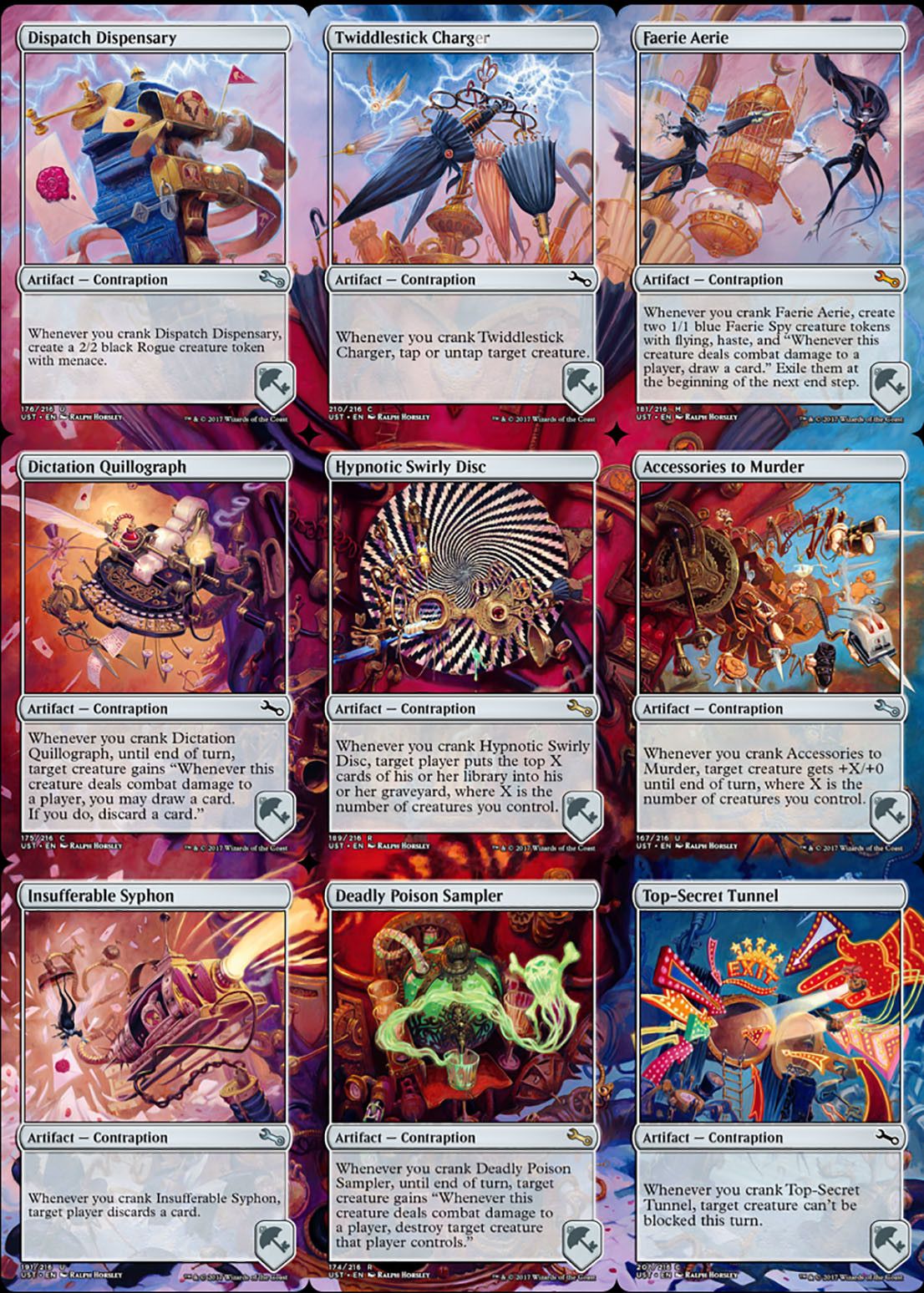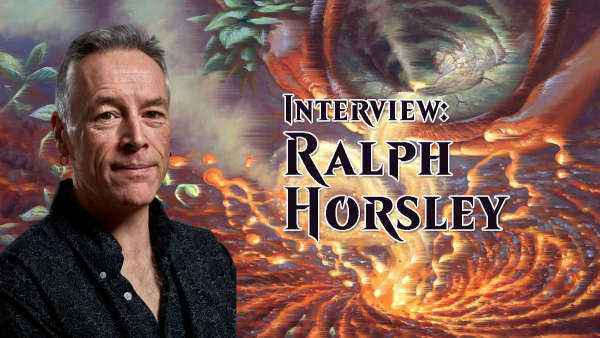Magic: The Gathering artist Ralph Horsley joins Magic Untapped for a Q&A.
For years, English artist Ralph Horsley has done illustrations and artwork for a whole host of different games and companies.
Dungeons and Dragons? Yup.
Hearthstone? You bet.
Electronic Arts? Yes.
And, well, you probably would figure that this intro leads into his work on Magic: The Gathering. And the answer is most definitely "yes."
Magic Untapped was able to trade emails with Horsley, who took the time to answer some questions about his art, Magic, and lots of other fun things.
Magic Untapped: What inspirations and influences in your life drove you to becoming a professional artist?
Ralph Horsley: As long as I can remember have drawn or painted. Initially this was inspired by military history or films. Always action scenes. Often with lots of figures, and with narratives flowing from one sketch page to the next. I inhabited the worlds of my imagination through the drawings I made. As a teenager I was introduced to Tolkien and D&D around the same time, and that brought about a major shift towards sketching out the characters and scenes I was playing. The AD&D (1st edition) rulebooks were a key influence, and I took up drawing in pen and ink in an attempt to emulate those classic line drawings.
I didn’t consider becoming a professional artist until I was already at University studying a degree in English literature and Librarianship. By then I was producing my own gaming fanzine and contributing to many more. I also received my first professional commission for an RPG magazine. Upon graduation I decided that I would try and become professional artists. The alternative option of becoming a librarian was far less appealing!

MU: How did you get your start with Magic: The Gathering?
RH: I met Kev Walker at UK GenCon where he recommended working on Magic, said my work was good enough, and that he would put me forward to the Art Director, Jeremy Cranford.
Thanks a lot Kev!
MU: How long do you typically spend on a piece?
RH: From initial composition studies through to finished piece takes me 35+ hours.
MU: Have you ever tried a more "out of the box" approach to a card where you try a new perspective or style?
RH: On a couple of occasions I have presented stylistic different approaches, but the AD has always preferred sticking with my more familiar method.
MU: You began making card art for Magic in Champions of Kamigawa and are continuing to do so, with cards coming out in the upcoming set, Unfinity. How, if at all, would you say the process of making card art for Magic cards has changed over the years?
RH: My process has changed. I present the Art Director with more composition sketch options, and work up more colour studies. I also work larger and have switched over from acrylics to oils. From the other side the operation has also developed. There are more Art Directors sharing a bigger workload. The style guides have developed and grown. There are technical changes to how work is submitted. Generally it is all just that bit slicker.
 MU: You've done artwork for a number of non-conventional Magic: The Gathering cards, such as a few of the scheme cards found in Archenemy as well as contraptions in Unstable and a module-style card in the recent Dungeons & Dragons set, Adventures in the Forgotten Realms. Was it any different for you in creating art for these non-typical Magic cards?
MU: You've done artwork for a number of non-conventional Magic: The Gathering cards, such as a few of the scheme cards found in Archenemy as well as contraptions in Unstable and a module-style card in the recent Dungeons & Dragons set, Adventures in the Forgotten Realms. Was it any different for you in creating art for these non-typical Magic cards?
RH: The difference might be in format, which may bring it’s own set of challenges, like creating the Contraption for Unstable. That required nine individual paintings to fit together to make one whole image. It can also mean that I get to push a more humorous approach, which is great to do. It’s always good to get to mix it up.
MU: Do you have a favorite art medium? If so, does it make fantasy artwork harder or easier to create?
RH: My favourite medium is to work in oils. That means you need to allow for drying time, and requires a little more prep, but it certainly doesn’t make it harder. If anything working with an approach you favour make sit easier.
MU: We know you have at least one new card art coming up in the Unfinity card Water Gun Balloon Game. Can Magic players expect any more of your cards in the upcoming sets?
RH: I worked on the concept team for Unfinity and have a lot of cards in that set. I have also done a few others since then which should pop up in the occasional set. I am very happy that I get a steady trickle of commissions through.
MU: What kinds of things are more tricky for you to create (landscapes, people creatures, etc.)?
RH: Lots of figures are challenging, but I like working on crowd scenes, so despite being tricky they are fun. What are find harder are mechanical things. Those hard edged precise inorganic forms are less appealing.
MU: Finally, what kind of projects are you working out outside of Magic? Anything your Magic-playing fans may want to keep an eye out for?
RH: I continue to work on D&D, and books covers for other RPGs. I also continue to work on my personal projects, particularly my ‘Wildborn’ range of landscapes with dragons in. Indeed I have just launched a Patreon page to enable me to create more of my own work.
Thank you to Ralph for participating in this interview.









